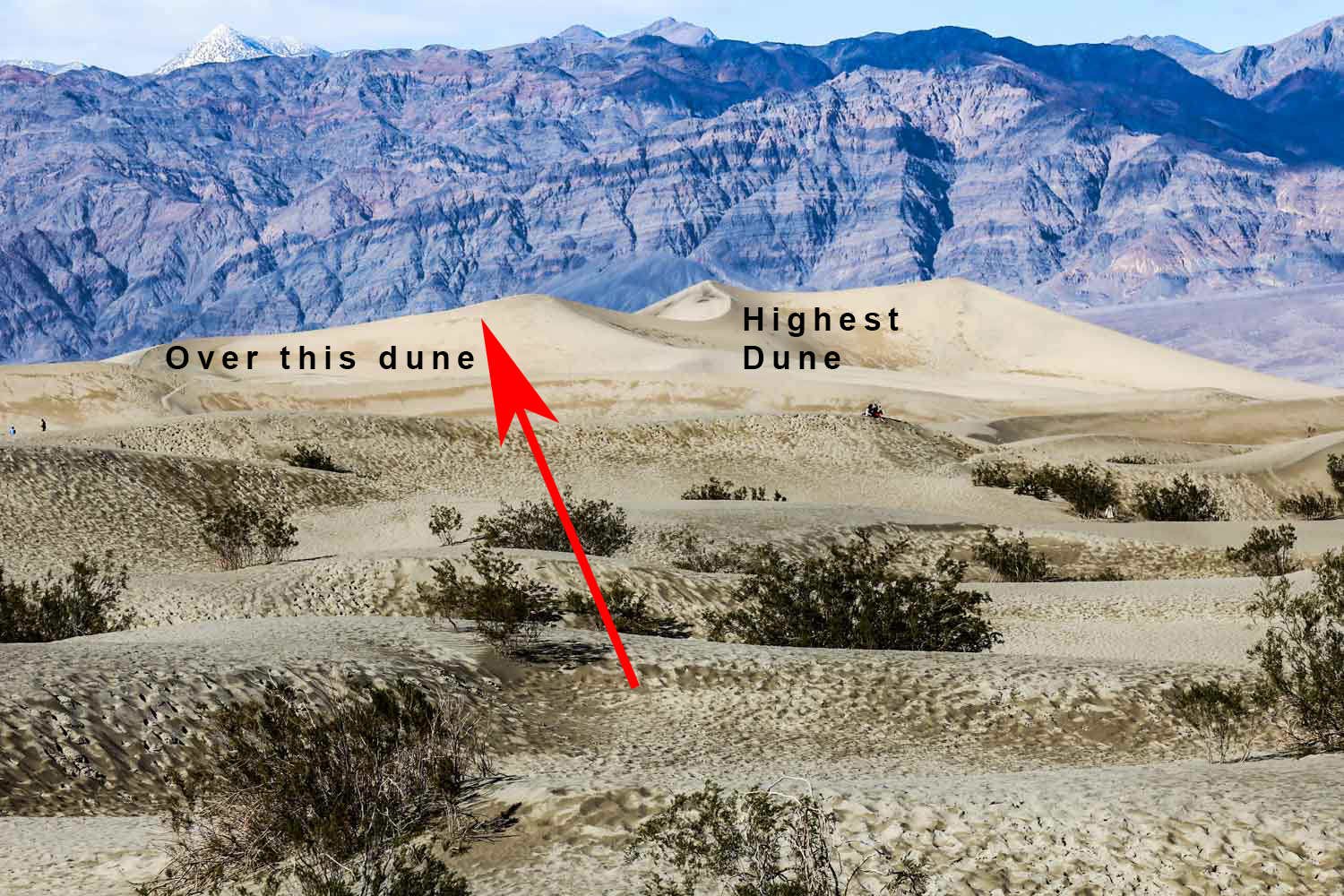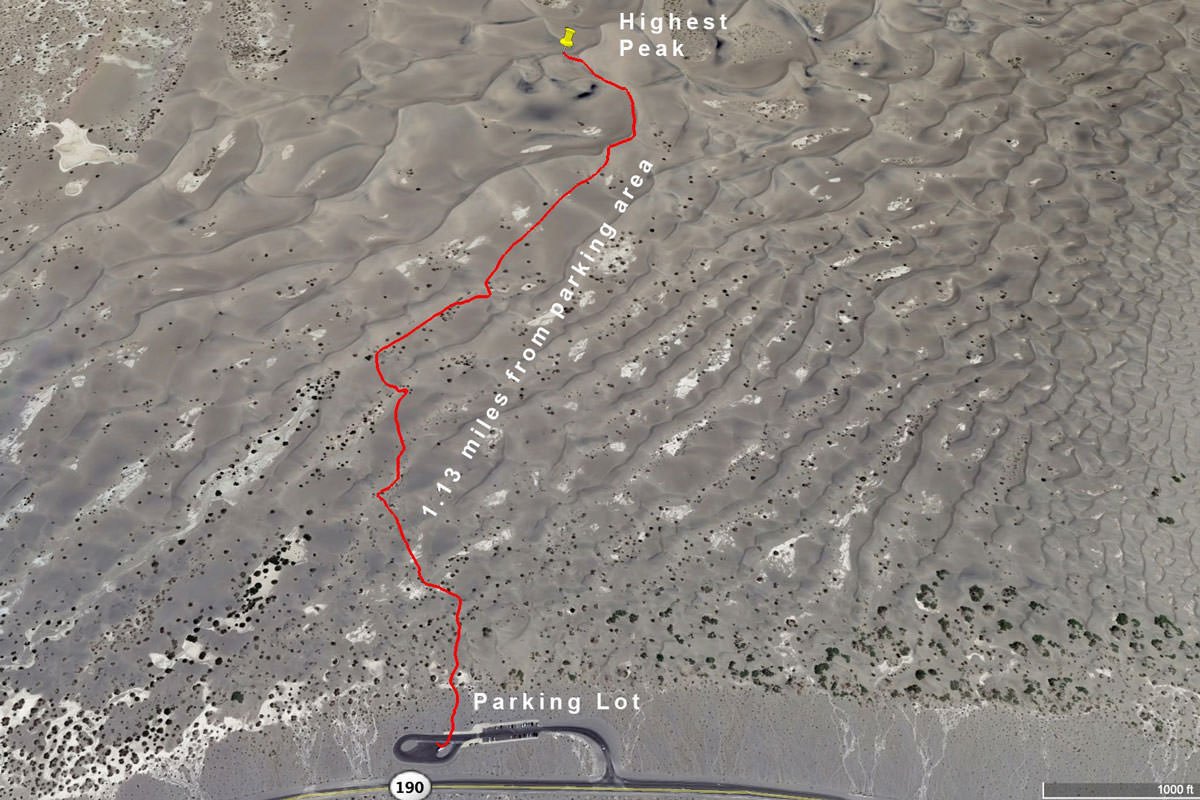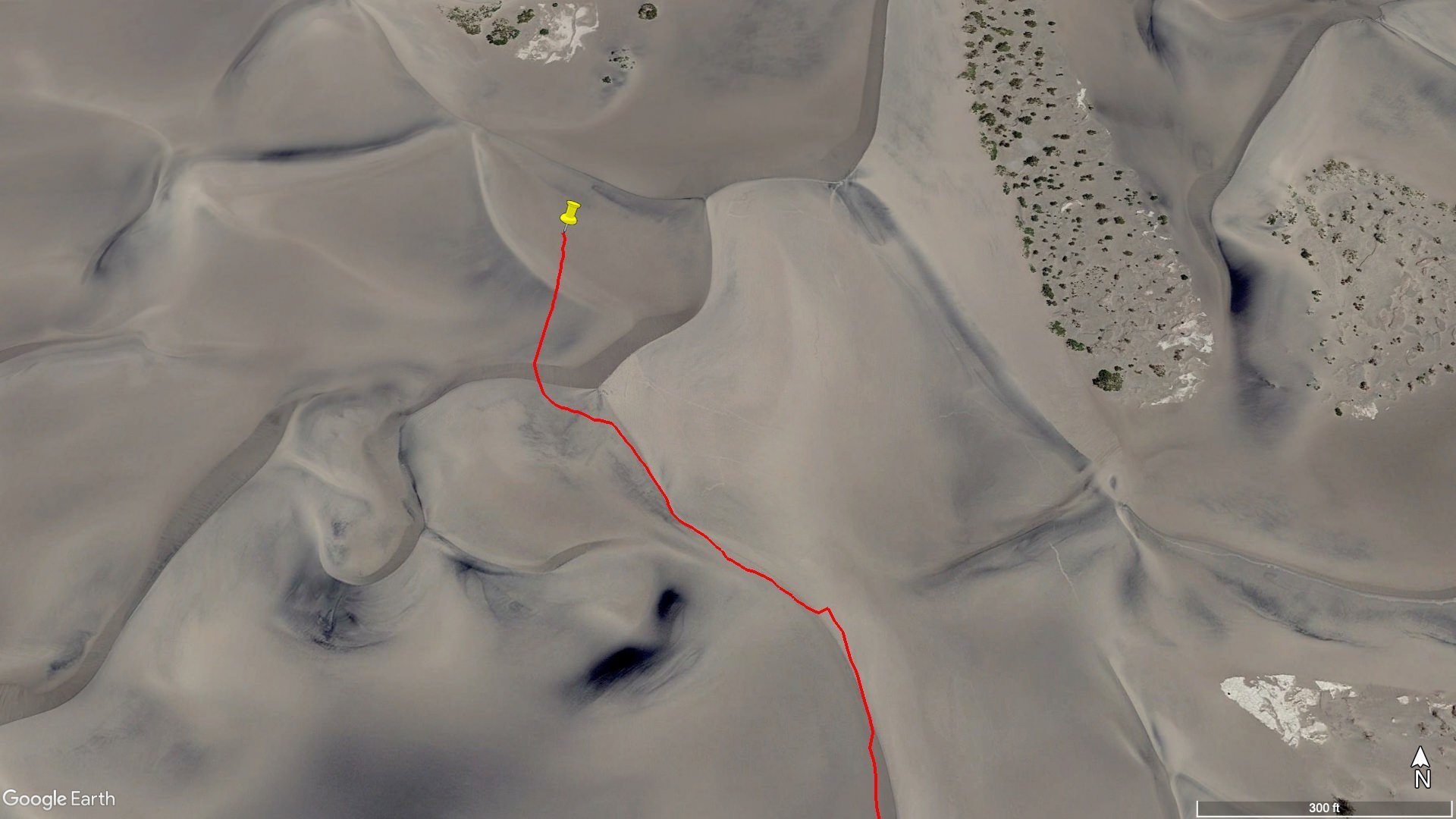Mesquite Dunes
MESQUITE DUNES
Death Valley NP, CA
Who doesn’t like to play in the sand? Mesquite Dunes is the easiest of the 5 major sand dunes in Death Valley to get to and can provide both mesmerizing abstracts and happy memories of your childhood playground.
This wonderful windswept landscape (which stretches over 2 miles) provides endless photographic opportunities and proves that even in the “hottest, driest, and lowest national park”, beauty can be found almost anywhere if you know where to look.
Images and location summary by Tim Wier
Trail Difficulty - MODERATE
I would rate the difficulty of this trail as a 2-3 on a scale of 1-5 (with 5 being most difficult). The hike to the location of this shot is 1.13 miles with plenty of ups and downs - and hiking sand dunes with 20 lbs on your back can be difficult. Additionally, scouting around Mesquite Dunes, you can easily walk 2-3 miles with plenty of elevation gain.
GPS Coordinates & Elevation
43 Ft. Elevation
View In Google earth
Download KMZ Trail File
Click Here to download the KMZ file for this location.
Directions
CLICK HERE to get driving directions to Mesquite Dunes parking area
From Stovepipe Wells - drive 1.9 miles east on CA 190E and pull into the parking area for Mesquite Dunes.
From Furnace Creek - drive northwest on CA190E for 23 miles and pull into the parking area for Mesquite Dunes.
To find the location of this shot - Mesquite Dunes like any other set of sand dunes is ever-changing and dynamic (meaning it changes over time as the wind blows), so there is no way to guarantee the scene at the GPS coordinates given will be the same as when this image was taken (Jan 2021). However, there is a pretty good chance it will be very similar.
With that in mind, the location is due north about 1.1 miles from the parking lot. The shot was taken just to the left (southwest about 100yds) from the highest dune with the curl top. I would suggest downloading the KMZ file or GPS coordinates to find the exact spot. Again, it may have shifted a bit, but looking around you may find it (or something similar).
Photography Tips
As mentioned, when shooting sand dunes, I am looking for abstracts or moods created by curves and shadows. This can be challenging at Mesquite Dunes as the dunes are not very tall and are surrounded by mountains.
For the shot above, I found the curved formation I liked and moved around to several different positions/angles and tried different focal lengths and tripod heights until I found the composition I liked and was able to eliminate most of the mountains in the background.
For me, the intriguing ripples in the sand were key to the shot as they guided your eye to the curve at the top. So I focused stacked 8-10 images starting at my feet and extending to the dune (using HeliconFocus to combine the different images), used a 24mm equivalent lens, and set the tripod about 2.5 ft off of the ground.
EXIF Data
Focal Length – 24 mm
Exposure – 1/90th sec @ f 8.0
ISO – 100
Date – Jan 26th
Time – 4:30 pm
Best Time of Day to Shoot
Photographing sand dunes is all about the composition the photographer is looking for.
For me, I am looking for abstracts and/or moods created by curves and shadows. With this in mind, I like to shoot at either the end or beginning of the day - when the sidelight provides depth and dimension to a composition. As a rule, I normally scout in the late afternoon and shoot in the last hour or so before the sun sets on the horizon. This allows me to visualize a composition to see how it unfolds as the shadows find their way across the dunes.
Sunset and when the sun sets in the horizon can be different times. The Mesquite Dunes are surrounded by mountains that blocks the sun long before the normal sunset.
The above image was taken at 4:30 pm on a day when sunset was at 5:10 pm
Best Time of Year
I have found it is best to shoot Mesquite Dunes in the late fall, winter, and early spring months as the temperatures are more moderate (obviously the summer months are extreme and I would avoid them). However, good weather brings more tourists and photographers - and if you have ever been to Mesquite Dunes, you know more people brings more footprints. Another advantage of shooting Mesquite Dunes in the winter is the sun is low in the sky which helps to create long shadows in the hours after sunrise and before sunset.
The image above was taken on January 26th
Lens(es) Needed
Photographing sand dunes provides an interesting conundrum. You want to bring a range of lenses (wide-angle t0 telephoto). However, changing lenses in blowing sand is not advisable. I usually like to photograph dunes with medium to long telephotos to capture abstracts or compressions. However, my two favorite dune shots were taken with a 24mm lens.
I would suggest bringing both, and if the wind is blowing, work with what you have on the camera.
The image above was taken with a 24mm equivalent lens.
Birds-Eye View
Permits
Mesquite Dunes are in Death Valley National Park and an entrance fee (good for 7 days) is required $35 (which can be purchased at the visitors’ center). Once in the park, there are no other permits required.
Direction of the Shot
The direction of the shot is north at 355°.
Equipment Needed
Dune photography can be great fun and sometimes challenging. Scouting around Mesquite Dunes, you can easily walk 2-3 miles with plenty of elevation gain, and trekking up sand dunes with a camera bag can take its toll. So obviously plan according with plenty of liquids, snacks, a hat, sunscreen and a compass.
From a photography standpoint, make sure you bring a sturdy tripod (for potential multiple exposures or focus stacking) and a good camera bag to store your equipment in. Also, I would strongly suggest bringing along a GPS devise to mark potential compositions during scouting and/or find your way back to the parking lot after the sun goes down.
Number of Other Photographers to Expect
Mesquite Dunes is a very popular place for tourists and photographers (sometimes in the hundreds on a busy day). However, the dunes are a fairly large place and you will just have to find a place that suits you. Crowds are greatly reduced at sunrise and early morning.
Weather
The weather in Death Valley is somewhat modest in the spring and fall, and the winters are pleasant during the days but can dip into the 20s at night. If you are out hiking, it is important to know that the temperatures can drop dramatically after the sun goes down.
Cell Service
I have Verizon and cell service at Mesquite Dunes is hit and miss.
Lodging & Camping
There is plenty of lodging, camping, and RV parks in Death Valley. Stovepipe Wells has two small hotels and a campsite near the general store. Other lodgings, camping, and RV parks are found at Furnace Creek. Furnace Creek is a nice full community with lots of rooms/cabins, a campground, a swimming pool, showers, a tennis court, and a golf course. The Inn at Death Valley is a more upscale resort just 1 mile south of Furnace Creek.
Nearby camping and lodging
Camping - click on the campground below for directions
Stovepipe Well campground (2 miles)
Texas Springs campground (27 miles)
Sunset campground (26 miles)
Furnace Creek campground (27 miles)
Lodging - click on the lodging below for a TripAdvisor review
The Ranch at Death Valley
(760) 786-2345
Furnace Creek, CA
The Inn at Death Valley
(760-786-2345)
Furnace Creek, CA
Nearby Restaurants
Fine dining establishments in Death Valley are limited. However, there are several places to eat and a watering hole in Furnace Creek (The Ranch at Death Valley).
There is one restaurant at the Inn at The Ranch at Death Valley and three restaurants at The Inn at Death Valley.
Area Guides and Workshops
None





